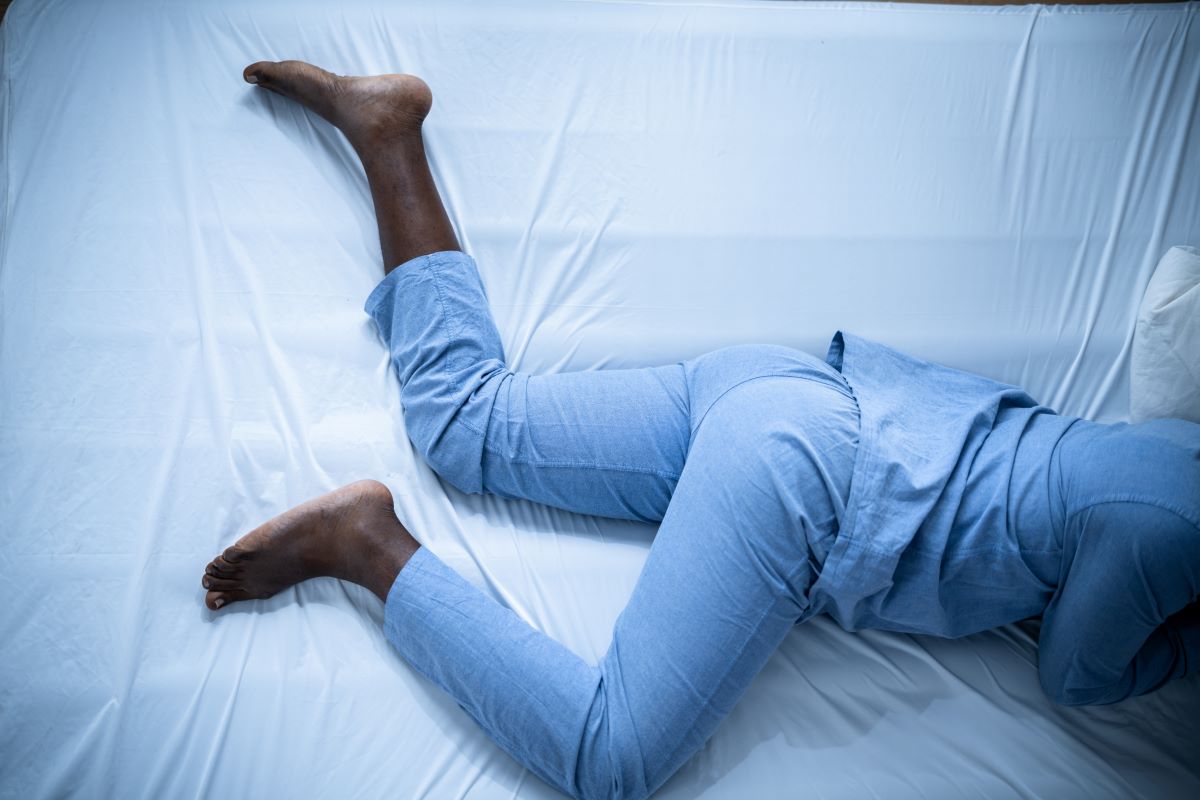Specialist Advice — 9 minutes
What is REM sleep behaviour disorder?
REM sleep behaviour disorder (REMSBD) is a parasomnia characterized by abnormal or disruptive movements during REM sleep (dream sleep), unlike sleepwalking, which occurs earlier, during the phase of deep slow-wave sleep.

As this disorder is rare, few studies have been done on its prevalence. An estimated 1 to 2% of the total population[1] are affected, often after the age of 50.
Symptoms
Typically during REM sleep, the phase when dreams occur, the body is unable to move. People with REMSBD do not experience this muscle atonia (paralysis) and may engage in behaviours, often violent, that usually correspond to the theme of their dream.
For instance they will talk, shout, gesticulate or even throw punches, which may result in injury to themselves or their bed partner. If awakened, they will remember that their behaviours were connected to their dream – they were trying to save someone in danger, for example.
Causes
REMSBD is thought to be caused by an impairment of certain neural systems in the brainstem that suppress muscle activity during REM sleep. This dysfunction could be due to the use of antidepressants, alcohol withdrawal or sedative medications, but also damage to the brainstem, such as lesions (e.g. stroke or tumour) or a neurodegenerative disease such as Parkinson’s. REMSBD sometimes has no known cause; in this case it is called idiopathic REMSBD.
In addition, studies now tend to indicate that the presence of REMSBD is a predictive factor for neurodegenerative diseases such as Parkinson’s, dementia with Lewy bodies, and multisystem atrophy.[2] According to one study, more than 70% of subjects with idiopathic REMSBD developed one of these diseases during the 12 years of follow-up.[3]
REMSBD is sometimes diagnosed following post-traumatic shock, and COVID-19 infection may be a new risk factor. However, this remains to be confirmed by further studies.
Diagnostic
An REM sleep behaviour disorder may be suspected when a person or their partner reports incidents while they are asleep, including injuries. A polysomnography can usually confirm the diagnosis by detecting excessive motor activity during REM sleep. Audiovisual monitoring is used to observe abnormal body movements and vocalizations, followed by a neurological examination to rule out neurodegenerative disorders.
Treatment
Treatment for REM sleep behaviour disorder is a combination of medication and injury prevention. Clonazepam is usually prescribed to suppress violent behaviour during sleep, or sometimes melatonin is prescribed as it has milder side effects. Most patients must take these medications for life to prevent episodes.
To avoid injury, it is also important to provide a safe sleeping environment for the person and their partner. Suggestions include placing the mattress on the floor, padding the corners of furniture, protecting windows, as well as removing potentially dangerous items such as blunt objects from the bedroom. In addition, it may be prudent for the partner to sleep in another room until the symptoms of REMSBD are under control.
For professional support, we're here for you
We provide services that can help your doctor diagnose sleep disorders and determine the appropriate treatment.
- Polysomnography level 1-AASM (in laboratory)
- Home sleep test
- Sleep Care services
- Sleep hygiene program
- Online boutique
You have a question about an equipment? Chat online with our respiratory therapists.
Sources3
- ROGUSKI, Amber, et al. “A Neurologist’s Guide to REM Sleep Behavior Disorder,” Frontiers in Neurology, July 8, 2020, https://www.frontiersin.org/articles/10.3389/fneur.2020.00610/full.
- IRANZO, A., et al. “Neurodegenerative Disorder Risk in Idiopathic REM Sleep Behavior Disorder: Study in 174 Patients,” PLoS ONE, Vol. 9, #2, p. e89741, 2014, https://journals.plos.org/plosone/article?id=10.1371/journal.pone.0089741.
- POSTHUMA, Harold, Alex IRANZO, Michele HU, et al. “Risk and predictors of dementia and parkinsonism in idiopathic REM sleep behaviour disorder: a multicentre study,” Brain, Vol. 142, #3, pp. 744-759, March 2019, https://doi.org/10.1093/brain/awz030.









